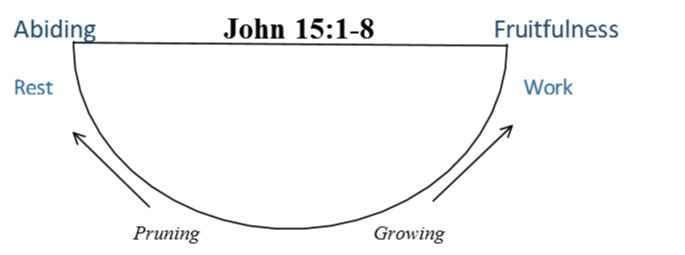
A part of ministry is reproducing yourself. Essentially, we want to work ourselves out of a job by replicating ourselves. It’s no different for group leaders. Breen’s discipleship square is a helpful way to go about developing an apprentice. The dream is that every leader would have at least 1, preferably 2 apprentices at any given time with the ultimate intent that the group will be left to the apprentice as the original leader moves on or that the apprentice will be commissioned to his or her own group.
The square consists of 4 parts: Direction, Coaching, Collaboration, and Empowering. At the outset, notice that “we talk” is a part of each aspect. Debriefing is essential for developing leaders. In the Direction Phase, the leader doesn’t ask for input, help, or advice. The leader says: here’s how I do it and here’s how you should do it. This part may look like: 1. Read the Bible this way, e.g. use cross-references, use hermeneutical circles; 2. Lesson plan this way: use this kind of outline, write out transition sentences, list the discussion questions; etc. We show them what we do.
In the Coaching Phase, the leader asks for input from the apprentice after teaching, e.g. did you notice how I transitioned from the introduction? did you notice how I cut such and so out of my outline to let that person share what the Spirit put on their heart? Or perhaps you give them your outline and ask for a critique, explaining why you did this or that. You are still doing the teaching and leading, but you are pulling the curtain back a bit to show more of the conceptual thinking behind what you’re doing. The apprentice is learning why we are about the task of teaching. This stage is often the toughest because the apprentice comes to see what it actually takes to lead God’s people and repeatedly regresses in discouragement. The key words for the leader here are: grace, time, and vision.
In the Collaboration Phase, you put the apprentice to work. Have your apprentice make outlines even if he or she is not teaching. Have them write out an introduction illustration or the like. And then let them teach. It is crucial that you continue debriefing in this stage: here’s what went well; here’s what you could do different; here’s how I dealt with such and so an issue; etc. During this time, you must guide the apprentice in prayer for who he or she is called to lead.
In the Empowering Phase, you either leave the group in the hands of the apprentice as you move on to launch a new group or you commission the apprentice out to whomever they are called to lead. We revel in the joy of watching a leader that God allowed us to pour into as they disciple others. And we continue to talk as iron sharpens iron. Ideally, this pattern will continue for generation after generation as God glorifying discipleship family trees are developed, illustrated by the image below:

Jesus led His disciples this way.
- Stage 1: In Mark 1:15-20, Jesus calls the disciples telling them about the great kingdom of God and the good news to come. I can imagine their incredible excitement: here’s the Messiah and we get first dibs on the kingdom!!
- Stage 2: In Luke 12:32-34, Jesus tells them the cost: sell your possessions to give to the poor, your treasure is in heaven, not to mention the rocks hurled at them and their leader and the vitriol poured out at Jesus. I can imagine them thinking: this ain’t the kingdom I had in mind!! Imagine their discouragement and recognize why Jesus needed to minister to them personally for over two years: He had to establish them.
- Stage 3: In John 15:12-17, Jesus is speaking to adult disciples, metaphorically, as He gives them the vision of loving one another by washing their feet.
- Stage 4: Finally, Jesus gives them the Great Commission: I’ve given you all authority, go reproduce yourselves!
